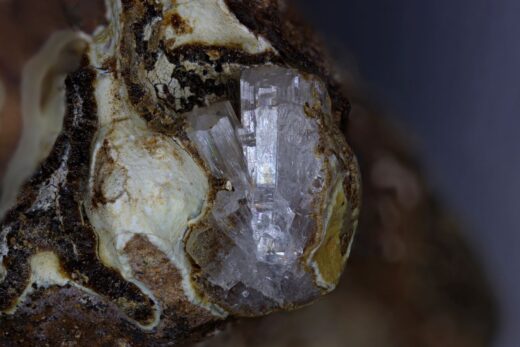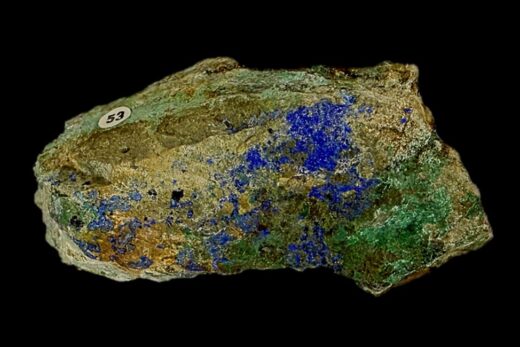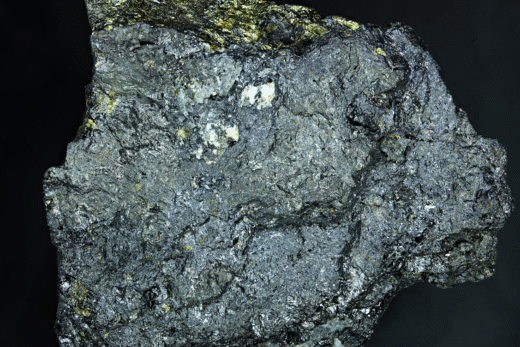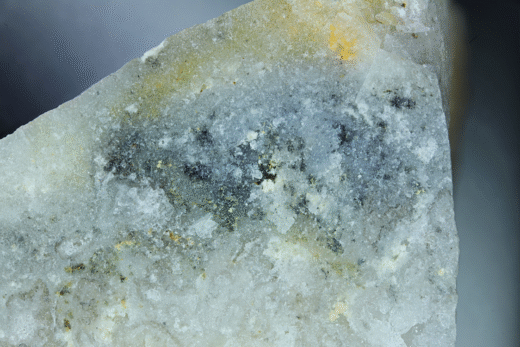Formula: KAl2(AlSi3O10)(OH)2
From Alfredo Petrov:
MUSCOVITE (shiro-unmo)
- Aichi: Fine-grained massive white “sericite-2M” (illite or muscovite?????), some with minor iron staining, is mined for cosmetic purposes (wavy optical effects in shampoo) at the Furikusa mine (previously known as the Iname mine).
- Ehime: Ammonium-bearing muscovite is abundant in the Ohgidani clay mine, with tobelite.
- Fukui: “Cerasite” as silvery white pseudomorphs after blocky cordierite xls to 2cm long, 9mm cross section, at Torihama, contrasting distinctly with the dark grey hornfels matrix.
- Fukuoka: At Nagatare, muscovite forms plumose aggregates of pearly white lamellae, with quartz and orthoclase in a greisenized granite. In pegmatites at Kotohge, muscovite forms pseudomorphs after thick prismatic sekaninaite crystals to over 7cm, dark grey on c-face cleavage surfaces, brown on prism faces.
- Gifu: Forms the silvery rims around large zinnwaldite crystals in the miarolytic pegmatites of Hirukawa village; druses of smaller crystals are generally all muscovite. Light green, talc-like muscovite forms a cm-thick alteration zone around light violet corundum crystals in graphite-biotite-rich rocks in Kawai-mura.
- Kyouto: “Cerasite”, commonly known in Japan as “sakura-ishi” (= “cherry blossom stone”) because its colour and cross-section resemble that flower, is a muscovite pseudomorph after trapiche cordierite sixlings occuring, sometimes abundantly, in hornfels, slate or their weathered elluvial soils. Greenish when broken out of fresh rock, but local collectors prefer the loose weathered ones which have oxidized to a silvery pinkish white colour more reminiscent of their namesake cherry blossoms; to 8mm diameter at Kameoka-hachiman and nearby at Yunohana. In contact metamorphic slate at Sakuratenjin as hexagonal prisms to 15mm long and 8mm diameter, with the typical “cherry blossom” cross section. Also at Tamagawa.
- Nagasaki: Barium-manganese-bearing muscovite occurs in pink piemontite schist containing lenses of braunite ore around the Matsugaseko mine. Also at the Tone mine.
- Nara: Peculiar divergent or plumose rusty masses to 10cm on Bodai-yama. “Sericite” (muscovite?) at the Kambe mine and the Tohnomine mine.
- Niigata: Green nickel-bearing muscovite is a major component of some greenish pebbles on Itoigawa beaches.
- Okayama: “Sericite” is mined from an upper Cretaceous deposit at the Tsuchihashi mine.
- Shiga: At Tanokamiyama, as pearly white, rough hexagonal tabular xls to 7cm across in granite pegmatite.
- Tochigi: “Sericite” muscovite occurs as pseudomorphs after hexagonal “trapiche” cordierite crystals to 6mm (by hydration, not weathering) in hornfels in the Watarase riverbed near the Ashio mine. “Sericite” is also mixed with the pyrophyllite from the Nasu Roseki mine.
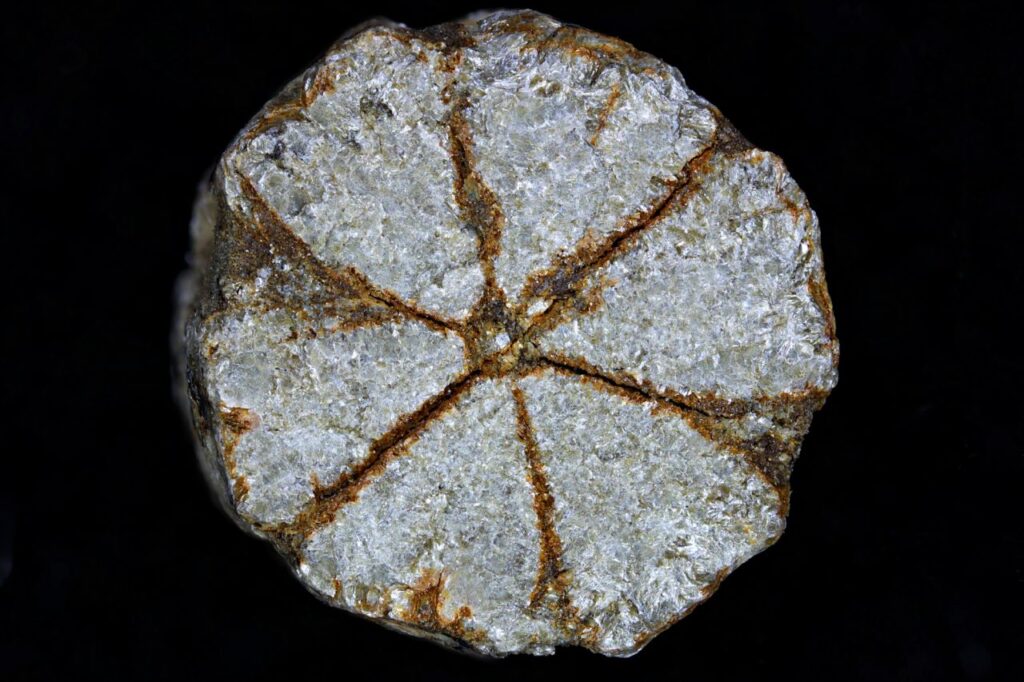
Above: “Cerasite”: Muscovite, cordierite, indialite, Daimonjiyama, Kyoto City, Kyoto Prefecture, Japan. Acquired by Jake Slago from Alfredo Petrov at the 2013 Tucson Show. Rocks and Minerals magazine Jul-Aug 2006: The third sentence in this nine page article reads: As with the real blossoms, these stones, known as sakura ishi (cherry blossom stones) are also revered by mineralogists and mineral collectors in Japan. This is a superb example that measures 6x6x6mm.
